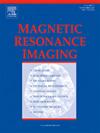采用开环螺旋谐振腔的柔性超薄超表面在低场0.2 T MRI中增强信噪比。
IF 2
4区 医学
Q2 RADIOLOGY, NUCLEAR MEDICINE & MEDICAL IMAGING
引用次数: 0
摘要
低场磁共振成像系统(本文章由计算机程序翻译,如有差异,请以英文原文为准。
Flexible ultrathin metasurface with open-ring spiral resonators for SNR enhancement in low-field 0.2 T MRI
Low-field magnetic resonance imaging (MRI) systems (<0.5 T) have emerged as increasingly valuable tools for emergency and bedside imaging due to their cost-effectiveness and portability, but their adoption is limited by low signal-to-noise ratio (SNR). Conventional optimization methods offer limited improvements, while current metasurface technologies face challenges related to clinical integration, such as excessive dimensionality, and inadequate SNR enhancement at low magnetic field strengths. Addressing these challenges, we present an ultrathin (0.136 mm) flexible open-ring spiral metasurface (ORSM) engineered via subwavelength resonator optimization. Through rigorous theoretical modeling (equivalent circuit analysis) and comprehensive electromagnetic simulations (0.2 T full-wave analysis), we demonstrate concurrent achievement of: (i) unprecedented 137.1-fold surface field enhancement, (ii) deep-tissue penetration reaching 140 mm, and (iii) exceptional mechanical stability (<0.05 MHz frequency shift under deformation). Experimental validation on a 0.2 T MRI scanner quantitatively confirmed the clinical impact of the ORSM. Testing on a large-volume phantom (180 mm in diameter) demonstrated 97.4–133.2 % SNR enhancement across various regions, resulting in an increase in mean SNR by over 2.3 times. Importantly, the ORSM also optimized field homogeneity, reducing the spatial coefficient of variation from 18.9 % to 3.8 % and the relative SNR variation from 58.3 % to 24.6 %, all while ensuring full compliance with safety standards. This technology uniquely combines clinical-grade flexibility, deep penetration, and substantial SNR amplification with field uniformity, creating a practical pathway for advancing portable MRI in critical care.
求助全文
通过发布文献求助,成功后即可免费获取论文全文。
去求助
来源期刊

Magnetic resonance imaging
医学-核医学
CiteScore
4.70
自引率
4.00%
发文量
194
审稿时长
83 days
期刊介绍:
Magnetic Resonance Imaging (MRI) is the first international multidisciplinary journal encompassing physical, life, and clinical science investigations as they relate to the development and use of magnetic resonance imaging. MRI is dedicated to both basic research, technological innovation and applications, providing a single forum for communication among radiologists, physicists, chemists, biochemists, biologists, engineers, internists, pathologists, physiologists, computer scientists, and mathematicians.
 求助内容:
求助内容: 应助结果提醒方式:
应助结果提醒方式:


